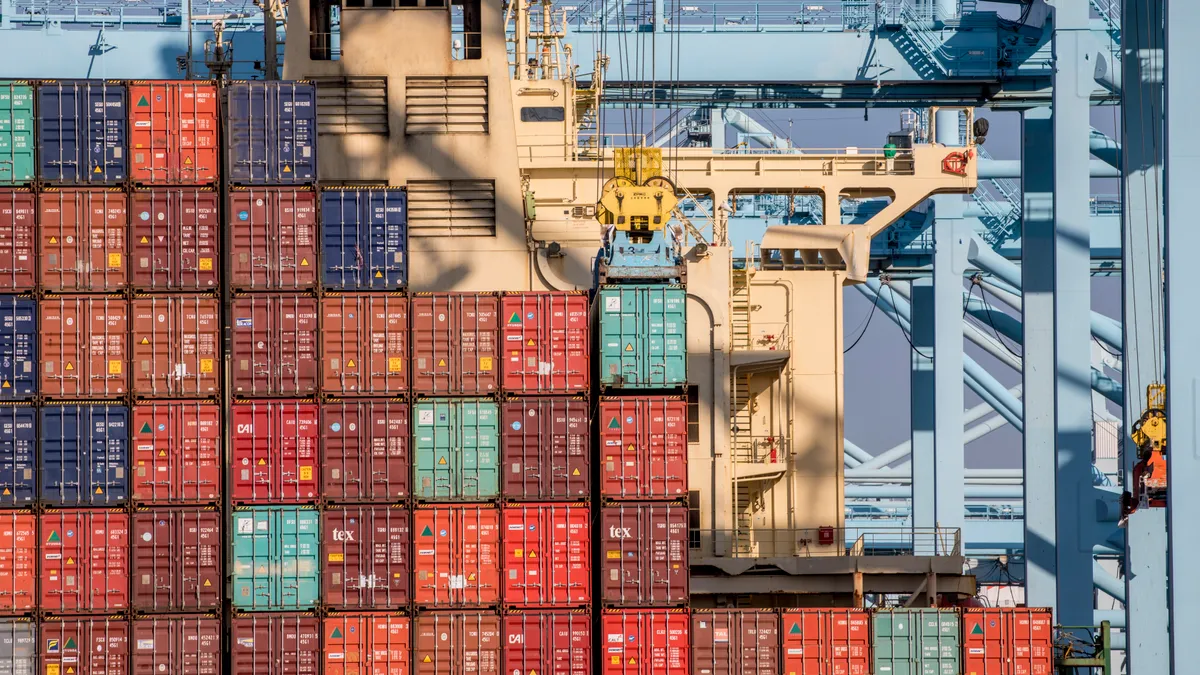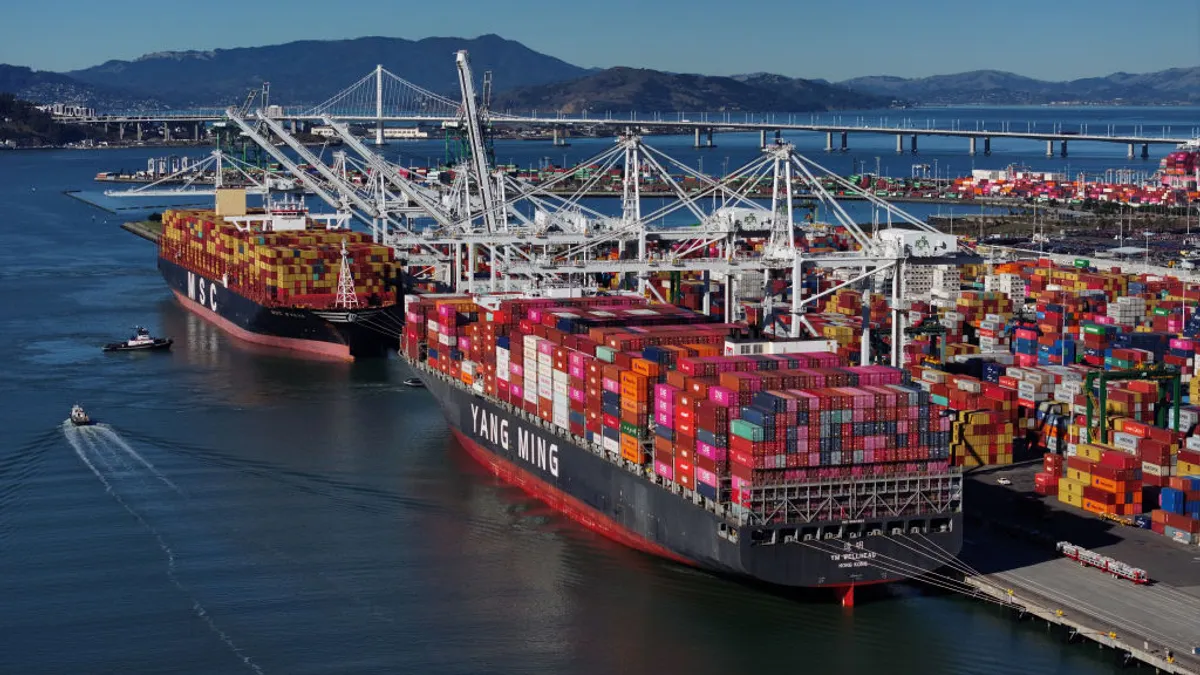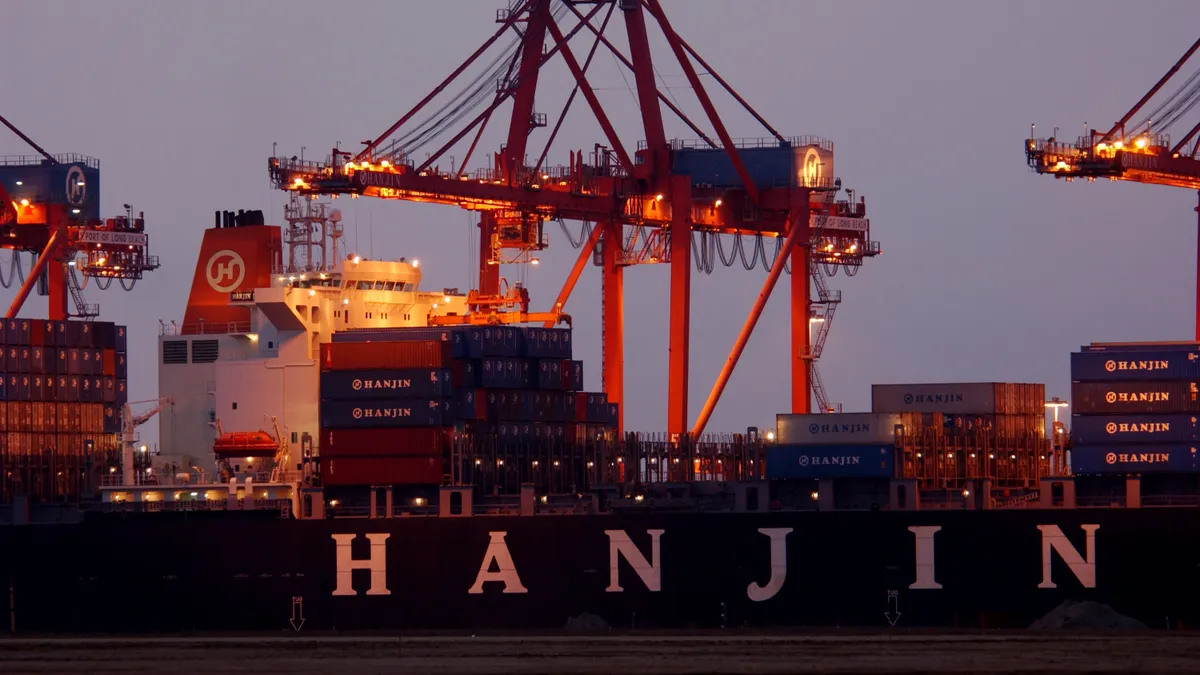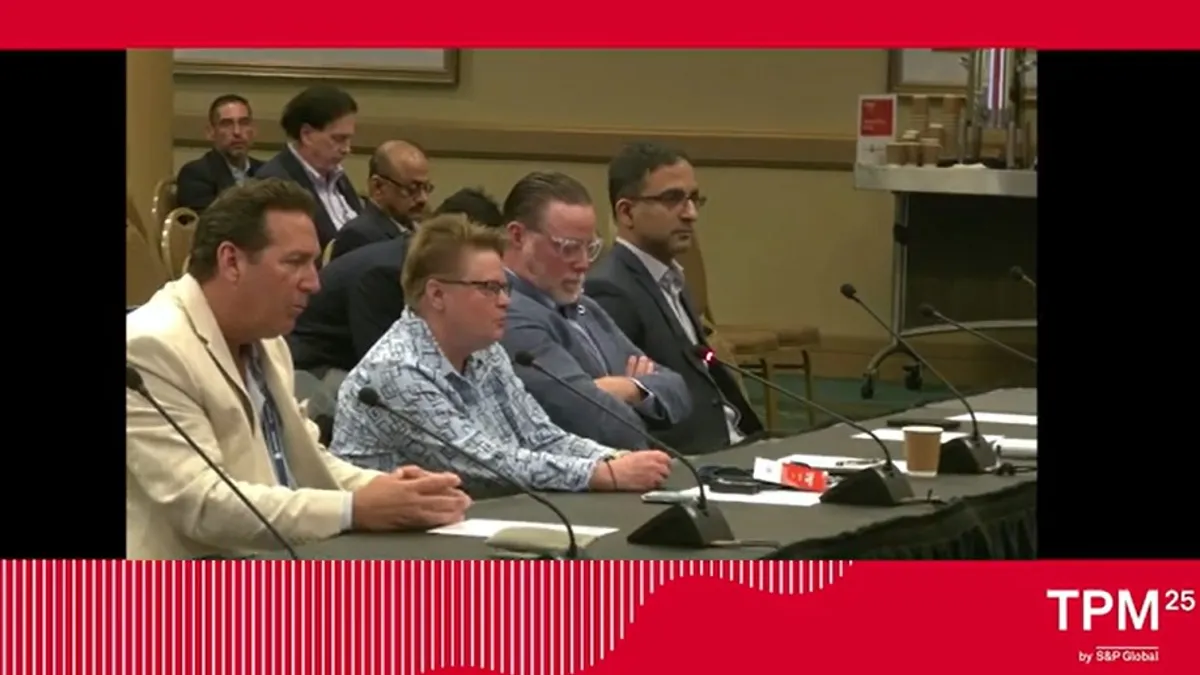The 10% tariffs announced Thursday in a four-part series of presidential tweets sent U.S. importers into what Sue Welch described as a "scramble."
"It's really hard to plan for crazy," Welch, the CEO of Bamboo Rose, told Supply Chain Dive. "And this is crazy."
The 10% tariffs are on $300 billion worth of goods from China, also known as list four.
The announcement was not altogether out of the blue, given that such tariffs on this fourth list had been threatened before and gone through a public comment period and hearings. But the timing of the announcement was largely viewed as unexpected, after just one round of U.S.-China trade negotiations concluded.
"The swiftness with which it escalated I think is a little bit surprising," Shehrina Kamal, product director of risk monitoring at DHL Resilience360, told Supply Chain Dive. "Now it does put in jeopardy the trade discussion that had been slated for September."
The tariffs will also come at the start of the fourth quarter and near the beginning of peak season, creating the potential to disrupt global supply chains and trade flows for the remainder of the year.
What's the impact of 10%?
Economic and trade impact analyses from earlier this year centered around the threat of 25% tariffs on list four goods. Some estimates predicted a 1.1% shrink in U.S. GDP with 25% tariffs on $550 billion of Chinese imports (all four lists combined), plus China's retaliatory tariffs, in place.
While 10% may seem like a drop in the bucket compared to 25%, consultants and analysts told Supply Chain Dive the impact will still be significant, in part due to the wide range of products covered in list four.
Manufacturing sectors are particularly affected by the list four tariffs, Kamal said. In the fourth tranche, 437 product items are metals, 303 are machinery and 133 are chemicals. These three categories together amount to $77.7 billion in imports, according to Resilience360.
When tariffs impact operations and the bottom line in manufacturing, such effects ripple further down the supply chain. Chemicals listed for tariffs in the fourth round are used in the production of food products, beverages, pharmaceutical, personal care items and more
The tranche four tariffs also garnered significant attention due to the myriad consumer products on the list, and the expectation that brands and retailers would have no choice but to push price hikes to consumers. The list includes apparel and footwear along with several types of consumer electronics.
"These additional tariffs will only threaten U.S. jobs and raise costs for American families on everyday goods," David French, senior vice president for government relations at the National Retail Federation, said in a statement after Trump announced the 10% tariffs.
Increased prices on consumer products, however, are a wait-and-see game, according to Lori Fox, VP of Customs Brokerage Services at American Global Logistics. Clients she works with are "more concerned about being competitive with other importers and other retailers in the U.S." The U.S.-based retailers importing from China will have to pay the tariff cost, but it's hard to know if businesses will deal with this by increasing prices for consumers or by allowing the higher cost to eat into their margins.
"Customers are in full panic on this."

Sue Welch
CEO, Bamboo Rose
If a major retailer raises prices, others are likely to follow suit. It's simply a matter of who makes the first move. In May, Walmart's CFO said tariffs would lead to increased prices. J.C. Penney and Macy's have warned about the challenges tariffs would present to their businesses, without explicitly stating whether they would raise prices. J.P. Morgan analysts estimated the 25% tariffs could result in price hikes of 10% to 20% at retailers such as Target, Costco and Michael's.
If retailers don't pass the full price increase to consumers as a way to stay competitive, they'll absorb the costs themselves, which could result in a hit to margins. Welch said lower margins could result in retailers having fewer sales than they wanted, and for those already struggling, it could even put them out of business. "Customers are in full panic on this," she said.
Does 10% mean 10%?
The 10% tariff may provide some relief compared to the earlier proposal of 25%, but there's no guarantee the duty rate will stay at that level, Kamal said.
After Trump's tweet announcement of the tariffs, Trump told reporters outside the White House the 10% tariff is "for a short-term period, and then I can always do much more or I can do less, depending on what happens with respect to a deal."
He added the rate can be lifted "well beyond 25%" with the caveat: "we're not looking to do that necessarily."
A similar situation unfolded last year, when 10% tariffs on $200 billion of imports were slated to rise to 25% at the beginning of 2019. The increase ultimately came in May. "If history repeats itself ... then it will likely move up to 25%," Fox said.
Regardless of the ultimate duty rate, organizations that import any products or materials from China still have to plan "for any possible future scenario," Steve Bowen, CEO of Maine Pointe, told Supply Chain Dive in an email. "There is no time to waste."
The mere act of planning can result in higher costs for an organization. On a recent earnings call, Hasbro said it incurred increased warehousing expenses as it pulled forward inventory in anticipation of tariffs.
What happens to peak season?
Peak season inventory ramp-ups typically come near the end of the summer, making the timing of a Sept. 1 tariff implementation problematic as shipments increase.
For importers shipping goods to U.S. East Coast ports, Fox said ocean freight transit times are typically around six weeks, which means it's too late to start pulling inventory forward. But on the West Coast, "the rush is on now," she said.
That rush, however, can wreak havoc on carriers and freight forwarders trying to coordinate customer shipments from China to the U.S., Welch said. She's heard from a freight forwarder client who is struggling to move enough equipment around and create space for his customers. "The whole supply chain gets disrupted," Welch said.
"You can't just re-source at the drop of a hat."

Lori Fox
VP of Customs Brokerage Services, American Global Logistics
Last year's fourth quarter saw similar disruption as tariffs (at the time 10%) went into effect Sept. 24, 2018. Importers rushed goods, creating record volumes at ports and tight capacity at many warehouses in the area.
Since then, executives in many parts of the supply chain have projected a muted peak season for 2019, at least compared to last year. But this latest tariff announcement could change that, said Blake Shumate, COO of American Global Logistics.
The tariffs "will likely encourage more freight to ship ahead of the deadlines, thus creating tight capacity and a stronger peak than we would have seen without it," he told Supply Chain Dive in an email.
Pulling forward inventory may be an option, but for most businesses, making supply chain adjustments in time for Sept. 1 is a near-impossible feat. "You can't just re-source at the drop of a hat," Fox said. "There's no quick and easy answer to this."
What happens next?
Trump told reporters the Sept. 1 implementation date is not to allow time for negotiations to remove the tariffs, but rather because "it takes a long time for the ships to come over."
In other words, it's almost certain tariffs on $300 billion worth of Chinese imports will come into place at the beginning of next month.
China said it will retaliate with "necessary countermeasures" but did not yet specify how. Kamal said retaliation would likely come in the form of non-tariff trade barriers, like scrutiny at customs and ports and restrictions on key exports to the U.S., such as rare earth minerals.
Even if the U.S. and China reach a trade resolution, Welch said the damage from disruption to supply chains will last long-term, at least five to 10 years. The rush to import goods and shift supply chains can strain shippers' relationships with suppliers, carriers and freight forwarders, she said.
"Relationships are being torn asunder," Welch said. "That's difficult to recoup."























